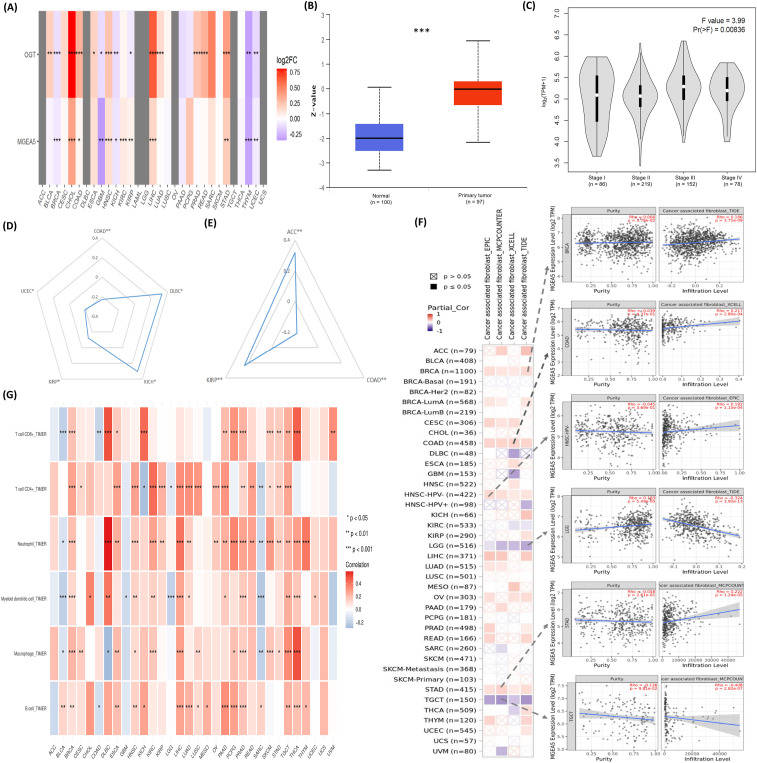
Systematic pan-cancer analysis reveals OGT and OGA as potential biomarkers for tumor microenvironment and therapeutic responses


Protein O-linked β-N-acetylglucosamine (O-GlcNAc) modification (O-GlcNAcylation) is a unique monosaccharide modification of essential importance in physiology and pathology.1,2 As a highly dynamic process, O-GlcNAcylation is mediated by two paired enzymes: O-GlcNAc transferase (OGT) and O-GlcNAcase (OGA), which add or remove the modification from proteins, respectively. Emerging evidence demonstrates that the aberrant O-GlcNAcylation underlies the initiation, progression, and metastasis of cancer.3,4 Remarkably, individual studies suggest that O-GlcNAc cycling enzymes and O-GlcNAcylation hold promise as biomarkers and therapeutic targets for certain types of cancers.1 However, integrated and pan-cancer analysis about the key enzymes across tumors has been lacking. In this study, we systematically explored the relationship between OGT/OGA expression with pathological status and their prognostic, immunological, and therapeutic roles in various cancers. It was revealed that OGT/OGA expression levels were significantly associated with a number of tumors, immune infiltrates and immunocytes, and cancer therapeutics (including chemotherapy and immune checkpoints). Taken together, by comprehensive pan-cancer analysis of OGT and OGA, we show that OGT/OGA can serve as valuable biomarkers for multiple types of cancers, such as colon adenocarcinoma (COAD).
